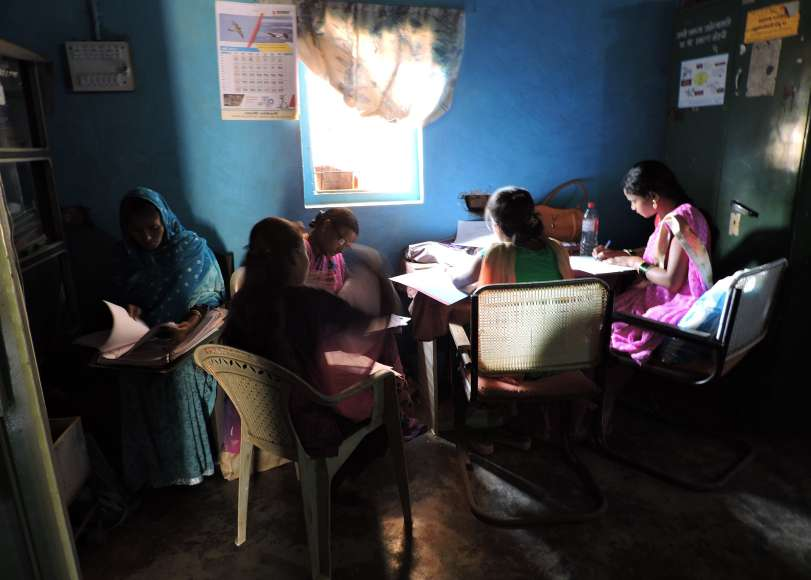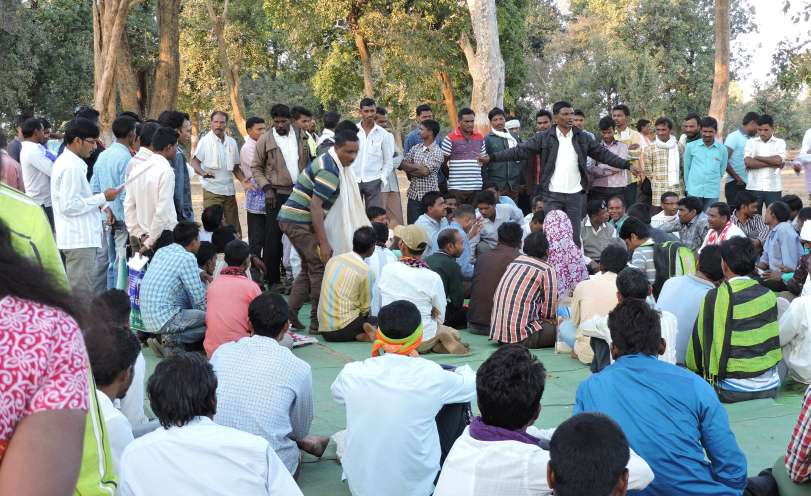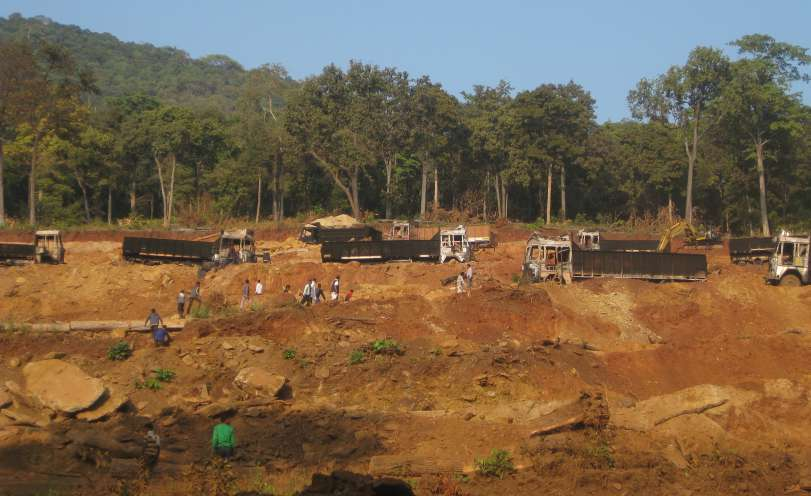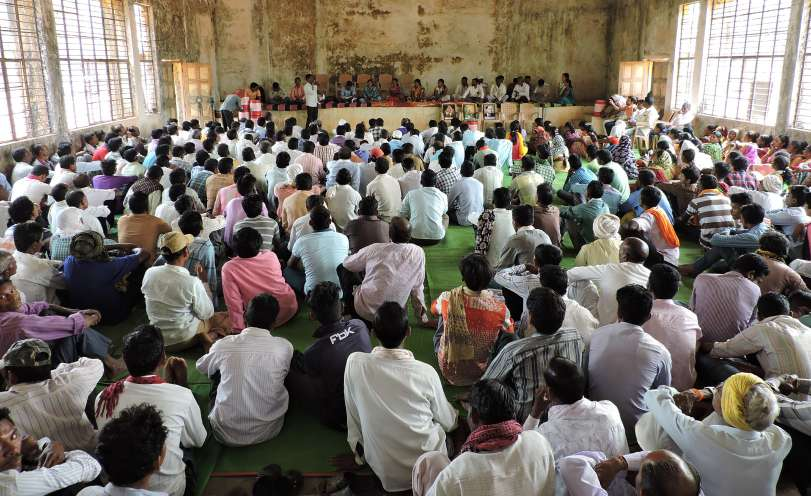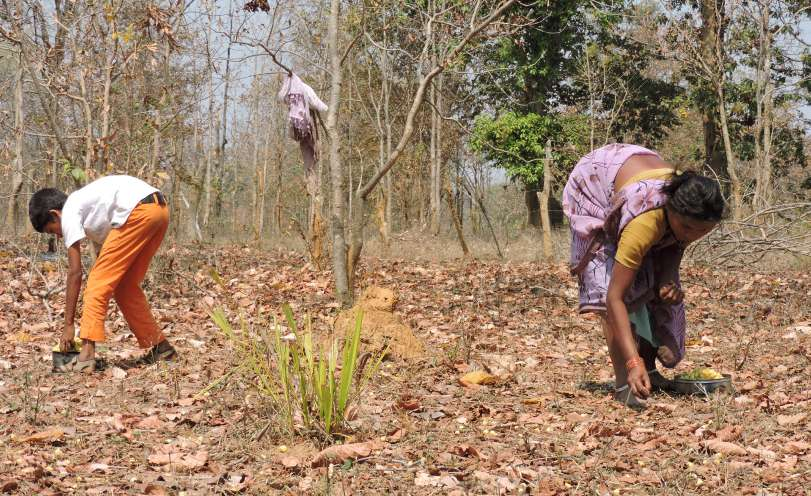| Authors | Upamanyu Das; Shrishtee Bajpai |
|---|---|
| Topics | Earth jurisprudence, Environmental justice |
| Case Report | Volume 1: "Resilience in the Face of COVID-19" |
Brief description
The Scheduled Tribes and Other Traditional Forest Dwellers (Recognition of Forest Rights) Act, 2006, also known as FRA, is an Indian law that recognises the historical injustice against Adivasis (India’s indigenous people) and Other Traditional Forest Dwellers (OTFDs) in colonial and post-colonial India as well as the importance of their role in conserving ecosystems. It provides individual rights for cultivation within forests, community rights over common property resources, and habitat rights—thereby ensuring conservation of resources while enhancing livelihoods and food security of the communities (CFR-LA, 2020).
As stated by CFR-LA (2020), the FRA vests the 'right to protect, regenerate or conserve or manage any community forest resource which they (Adivasis and Other Traditional Forest Dwellers) have been traditionally protecting and conserving for sustainable use'. It provides the power and responsibility to the gram sabha (village assembly) to protect, preserve, and manage the biodiversity, natural resources, wildlife, water sources, and its cultural and spiritual resources, and to prevent any activity that causes harm to these resources. These provisions are cumulatively known as Community Forest Resource Rights (CFR), and gram sabhas' have been vested with the authority to make CFR claims.
According to the Panchayat Extension to Scheduled Areas Act 1996 (PESA), gram sabhas are considered competent to safeguard community resources (as opposed to gram panchayat or village council). The gram sabhas maintain and hold the rights over usage of funds collected from community resources. Community Forest Rights Management Committees (CFRMCs), which are constituted and monitored by gram sabhas, are “entrusted with the duty to prepare conservation and management plans for community forest resources.”
These laws, having the potential to unlock decentralised governance for historically marginalised communities, have faced stiff opposition from various power centres. The Union Environment Ministry stated that under FRA, about 56 percent of forests were to be transferred from the Forest Department to the communities. However, years after it was passed as a law, only 13.13 percent of FRA’s potential has been utilised nationwide (Bijoy, 2020).
Process that led to the community being resilient (Pre-covid)
In India, some of the highest Scheduled Tribe populations are found in Central India, a region covering the states of Maharashtra (10.5 million), Chhattisgarh (7.8 million), and Madhya Pradesh (15.3 million) (Ministry of Tribal Affairs, 2014). This is a region rich in biodiversity and an estimated 183,000 Sq kms of forest cover (Ministry of Environment, Forest & Climate Change, 2017). Consequently, the marginalised communities have seen decades of state violence and repression, land grabbing, and illegal mining. Alongside, there have also been decades-long political movements and armed rebellions for the rights of Scheduled Tribes across the region (Prabhu, 1998 and Jaoul & Shah, 2016).
Gadchiroli district in Maharashtra has a vibrant history of resistance movements over the years demanding village self-rule and rights related to forests and resources. With the enactment of FRA in 2006 and PESA Rules being drafted for the state of Maharashtra in 2014, a strong people’s movement in Gadchiroli district was able to bring around 38 percent of forests under the control of gram sabhas by 2016.
In Korchi taluka (an administrative subdivision of a district), 87 of the 133 village gram sabhas had successfully claimed CFR Right titles over their traditional forests by 2012. The local leaders in Korchi started holding multiple open discussions at village and taluka-levels on the empowerment of gram sabhas, on resisting mining operations, and on their ideas of development itself (Broome et. al., 2020).
In 2016, as the communities were venturing into collection and trade of non-timber forest products, they realised that individual gram sabhas weren’t strong enough to oppose exploitative market forces. Hence, 90 gram sabhas in the district came together to establish a federation called the Maha Gramsabha (MGS). The MGS meetings are typically held once a month. All participating villages are equally represented, and its membership is sensitive to the social dynamics of caste, class, and gender—attempting to provide equal space to all. Over the years, it has evolved into a taluka-level pressure group concerning issues related to local wellbeing (Broome et. al., 2020).
Yet another story of community forest governance from Central India is situated in Ambagarh chowki, which is a development block in Rajnandgaon district, Chhattisgarh. It has a majority Adivasi population who are dependent on forest produce and agriculture. According to CFR-LA (2020), six villages in the block received their CFR recognition certificate in 2012-13. However, the certificate was automatically given in the name of the Joint Forest Management Committee (JFMC), which is composed of the Forest department and community members. This recognition in the name of JFMC was rejected by the gram sabhas, who then went on to form Community Forest Rights Management Committees (CFRMC), which are composed entirely of gram sabha members (CFR-LA, 2020).
As stated by Misra (2016), “the forest department continues to harass and threaten the villagers but the community has put up a strong fight.” The gram sabhas exercise the rights of CFRMCs to protect and patrol their forests, and practice CFR conservation. The CFRMCs have been an important institution for the proper implementation of CFR in the district (CFR-LA, 2020).
How resilience that was established has helped during the pandemic
The lockdown resulting from the COVID-19 pandemic affected communities in different ways. Within communities that depend on forests for their livelihoods, it meant that they were unable to collect or sell the forest produce, thereby disrupting their livelihoods and food security.
Korchi taluka saw many gram sabha leaders coming together to ease the distress caused by the lockdown by distributing essentials using the gram sabha funds. Single women and people with disabilities were given a priority in the distribution of essentials, and in some villages, ration kits were provided by the gram sabha. A few non-profit organisations have provided single women with seeds and organic manure for kitchen gardens. In the village Kukdale, the gram sabha has provided employment to 110 families by planting trees on open lands using compensation received by the gram sabha (Jamkatan, 2021).
However, in between all the relief work being done by gram sabhas in Korchi, the District Collector sealed the bank accounts of the gram sabhas citing irregularities in their relief work. The people of the taluka have had to suffer as a result, despite the help they have received from non-profit organisations. Currently, 19 gram sabhas have filed a case on the matter, which is pending in the high court. However, such unfair treatment by a malicious state apparatus has only strengthened the resolve of gram sabhas in Korchi (Jamkatan, 2021).
In Ambagarh chowki, as COVID-19 was declared a pandemic, the gram sabhas initiated a full lockdown in their villages. With communities starting to face difficulties in accessing essential supplies, the gram sabhas devised systems of solidarity and localisation by distributing locally-procured medicinal plants and vegetables within the communities (CFR-LA, 2020).
As Keshav Gurnale, a member of a community support organisation, states “The gram sabhas ensured food security for all families, including an estimate of the quantity of food required, especially by the most marginalised. They arranged a free and dry cooked meal for people. Due to the high number of migrant workers returning home, quarantine facilities were made in the district and food was provided to the workers” (CFR-LA, 2020).
Despite facing difficulties, the gram sabhas continued working under the CFR management plans and the MGNREGA scheme (a pan-India rural livelihood scheme). They built ponds to initiate fisheries businesses for employment. Alongside, they planted many indigenous food plants such as Jimikanda (Elephant Foot Yam) and Kochaikanda (Vine Potato) to ensure forest-based food security.
The CFRMCs devised methods to ensure the daily collection of forest goods (such as fruits, tubers, and firewood) and collection of Minor Forest Produce (such as Mahua fruits and Tendu leaves) in ways that have ensured safety from the virus and equal access to all families. Additionally, in order to prohibit overcrowding, the gram sabhas curbed food distribution at Public Distribution Centres, instead opting for doorstep delivery of essentials. Awareness about public health was prioritised as well—using slogans and loudspeakers to share information (CFR-LA, 2020).
Lessons learnt
While state-level and national-level governments have been failing in their attempts to curb both COVID-19 and the resultant failing economy, grassroots governance initiatives are providing a hopeful political alternative. Empowered with humanistic and ecologically-radical laws, indigenous community assemblies are providing us with descriptive ‘real-world experiments’ of alternative politics, economics, livelihood generation and sustenance, ecological conservation and social justice.
The two examples from Central India stated here are only a few among many such stories found across the subcontinent. There are well-documented cases of Community Forest Rights and gram sabha initiatives during COVID-19 from Narmada and Kutch districts in Gujarat, Gondia, Dhule and Nandurbar districts in Maharashtra, Dindori district in Madhya Pradesh, Nayagarh district in Odisha, and so on.
These stories show that if communities are in control of their local means of production, they can counter market forces and guard themselves against the insecurities of the mainstream economic system. While cities, with their heavily-guarded top-down governance, have been at the epicentre of the pandemic and the economic fallout, empowered grassroots communities have fared much better. The hope is that such a characteristic show of resilience by these communities will be a wake-up call to move towards direct democracy.
External references
Bijoy, C. R. (2020). “Why is the Government afraid of implementing the Forest Rights Act”. The Wire. Accessed on 20-06-2021 https://science.thewire.in/environment/community-forest-resources-forest-rights-act-2006-ministry-of-tribal-affairs-implementation-gram-sabha/
CFR-LA (2020). “Community Forest Rights And The Pandemic: Gram Sabhas Lead The Way”. Volume 2 of the Extraordinary Work of ‘Ordinary’ People: Beyond Pandemics and Lockdowns. Vikalp Sangam Pathak Broome, N., Bajpai, S., Shende, M. (2020). “On the Cusp- Reframing Democracy and Well-Being in Korchi India”. Global Working Group Beyond Development
Jamkatan, K. (2021). “The initiative of the Korchi Mahagramsabha during the pandemic”. Seeding Hope: Women’s Collectives Create Pathways for Change. Volume 4 of the Extraordinary Work of ‘Ordinary’ People: Beyond Pandemics and Lockdowns. Vikalp Sangam
Ministry of Tribal Affairs. (2014). “Tribal Profile at a Glance”. Accessed on 25-06-21 https://tribal.nic.in/ST/Tribal%20Profile.pdf
Ministry of Environment, Forest & Climate Change. (2017). “India State of Forest Report, Forest Cover 2017”. Forest Survey of India. Accessed on 25-06-21 https://fsi.nic.in/isfr2017/isfr-forest-cover-2017.pdf
Misra. S. S. (2016). “Strengthening Communities to Claim Community Forest Rights in Chhattisgarh” Oxfam in Action. Oxfam India.
Prabhu, P. (1998). “Tribal movements: Resistance to resurgence.” Indian Journal of Social Work, 59, p 230-255. Jaoul, N., & Shah, A. (2016). Beyond citizenship: Adivasi and Dalit political pathways in India. Focaal, 2016(76), 3-14.
